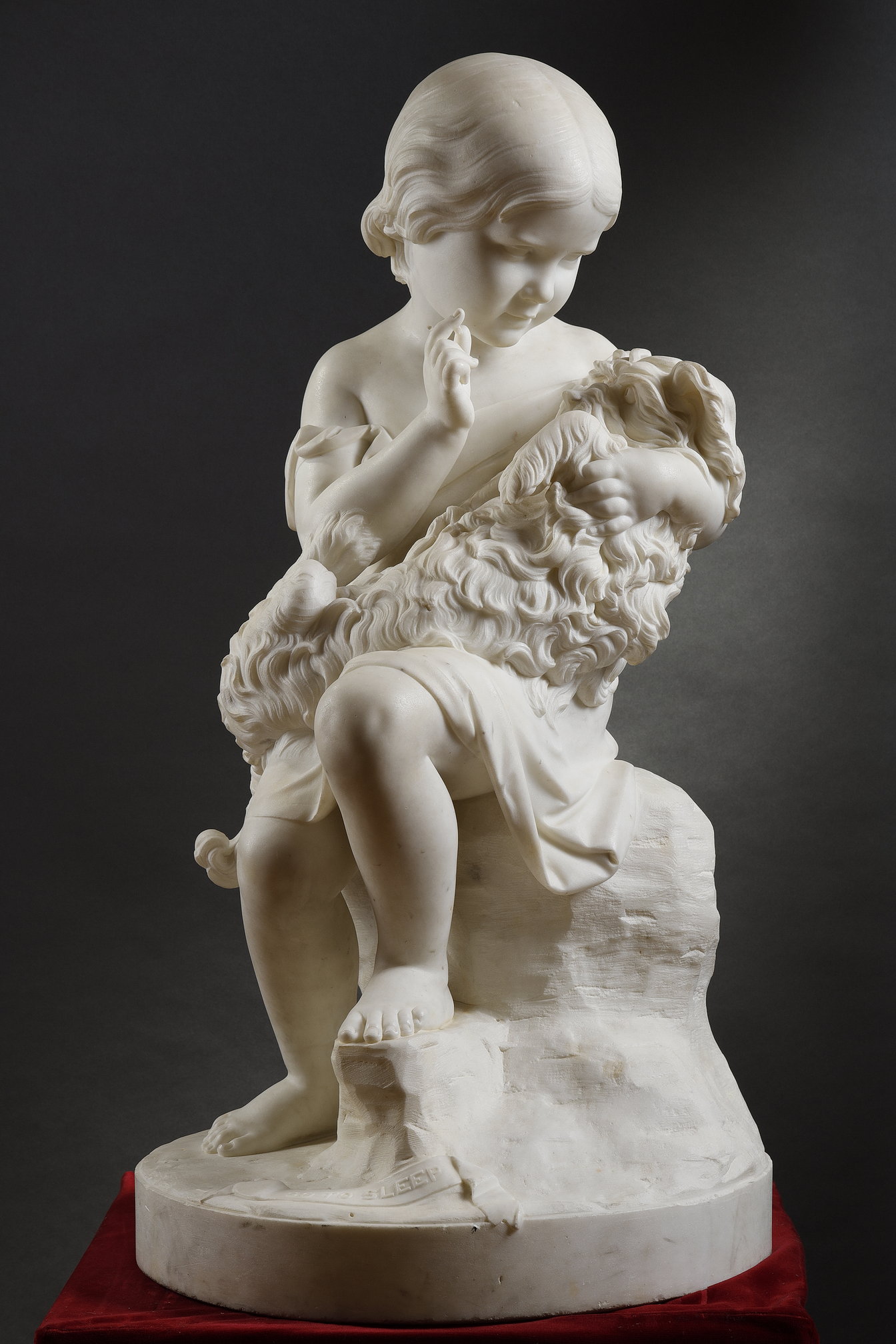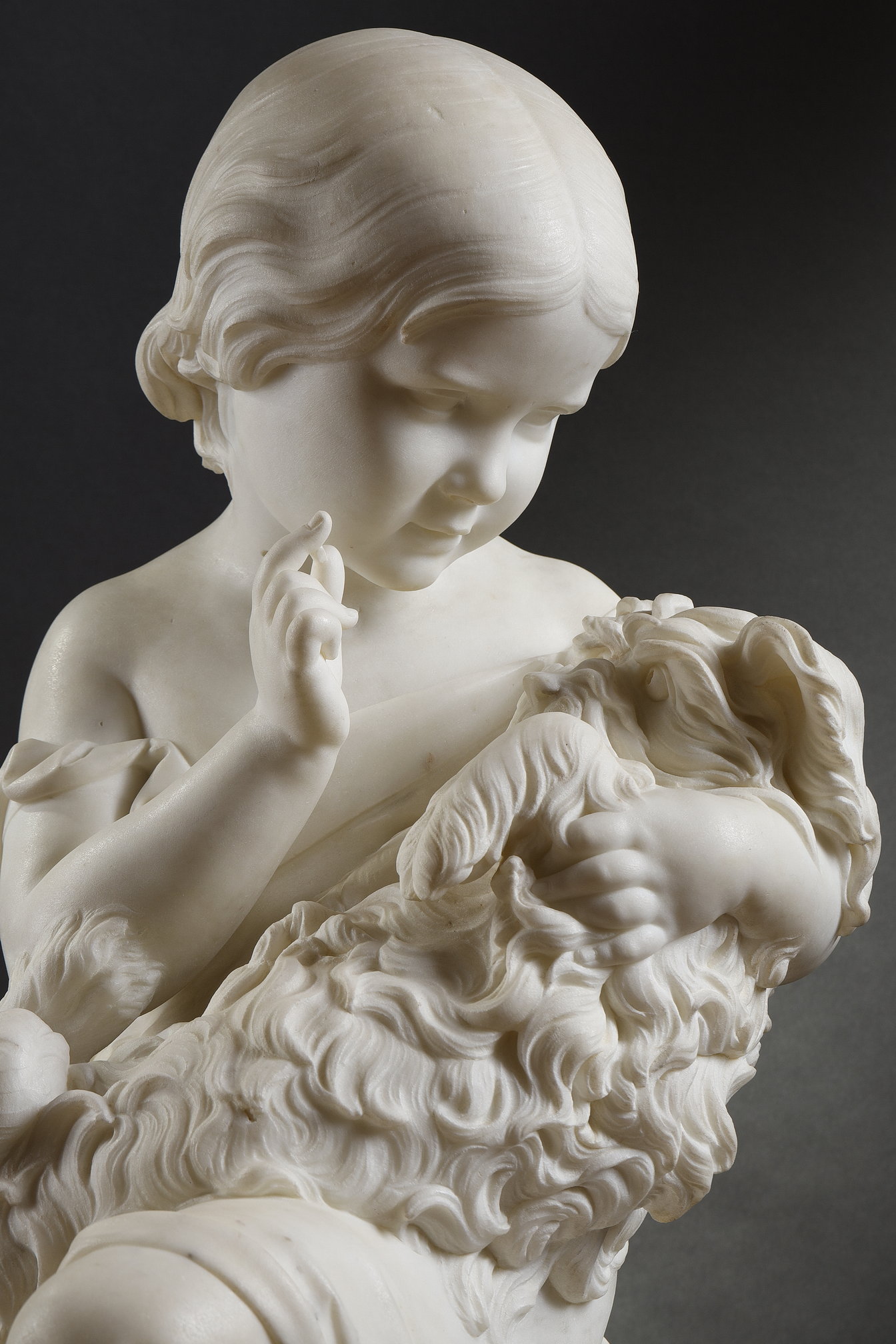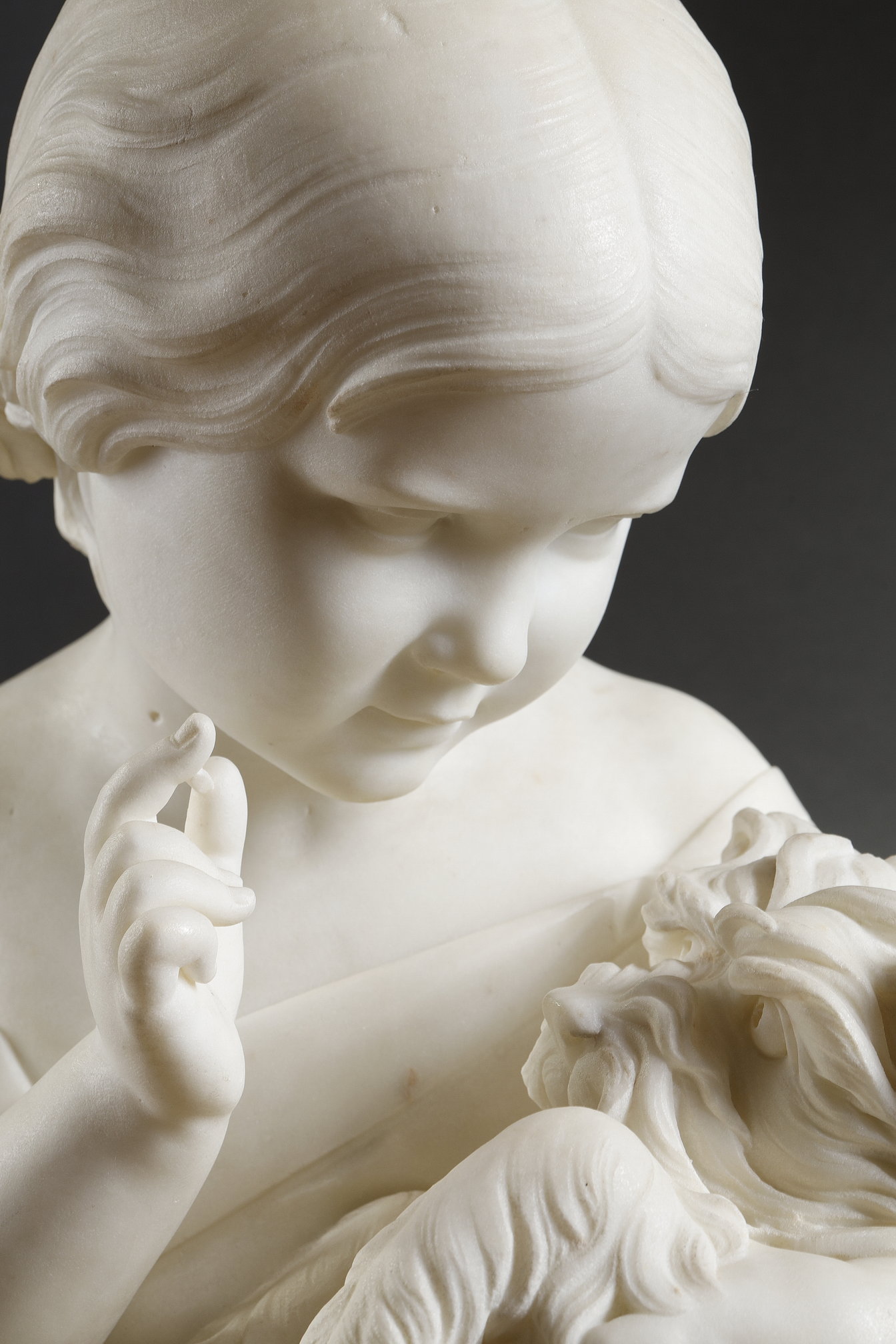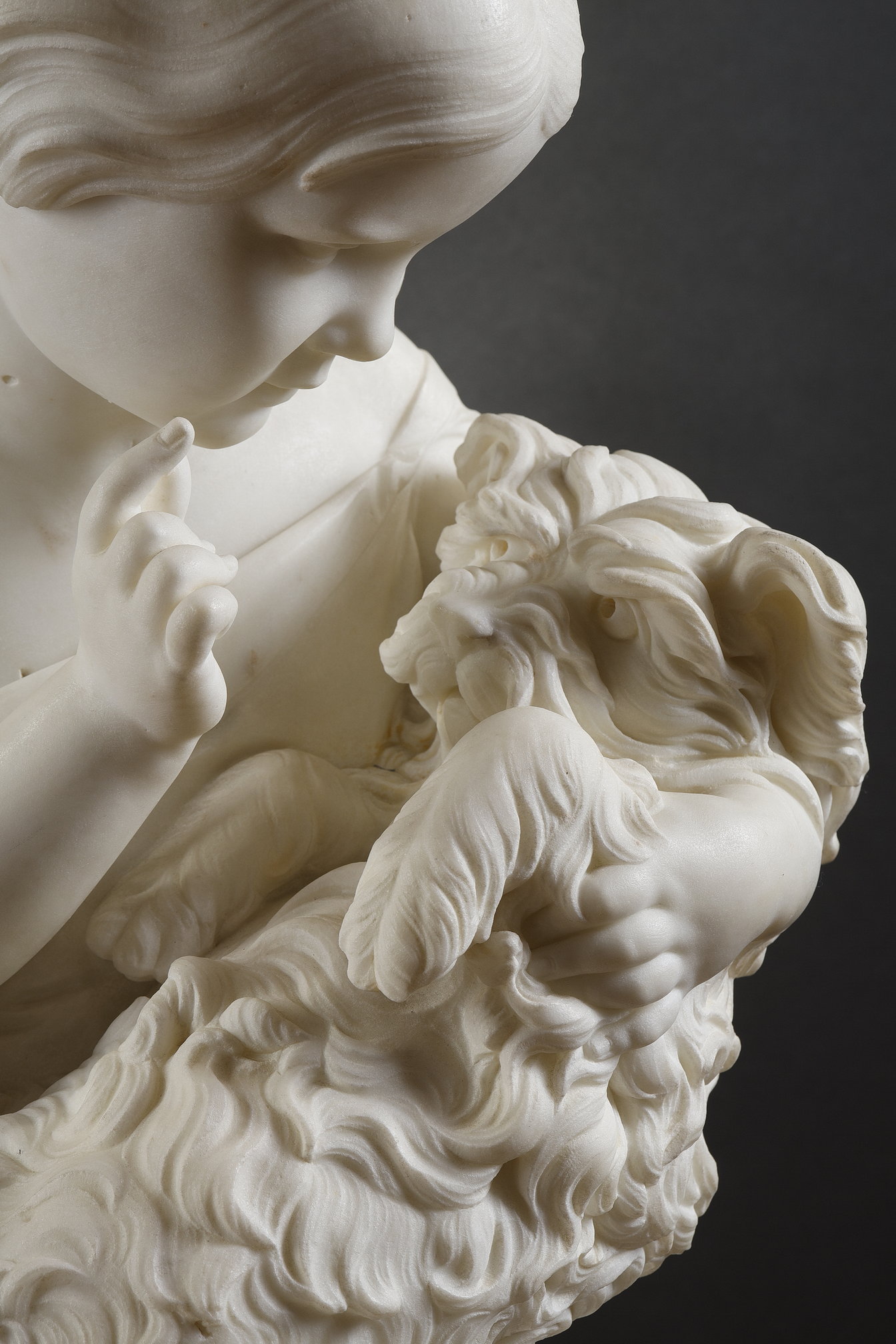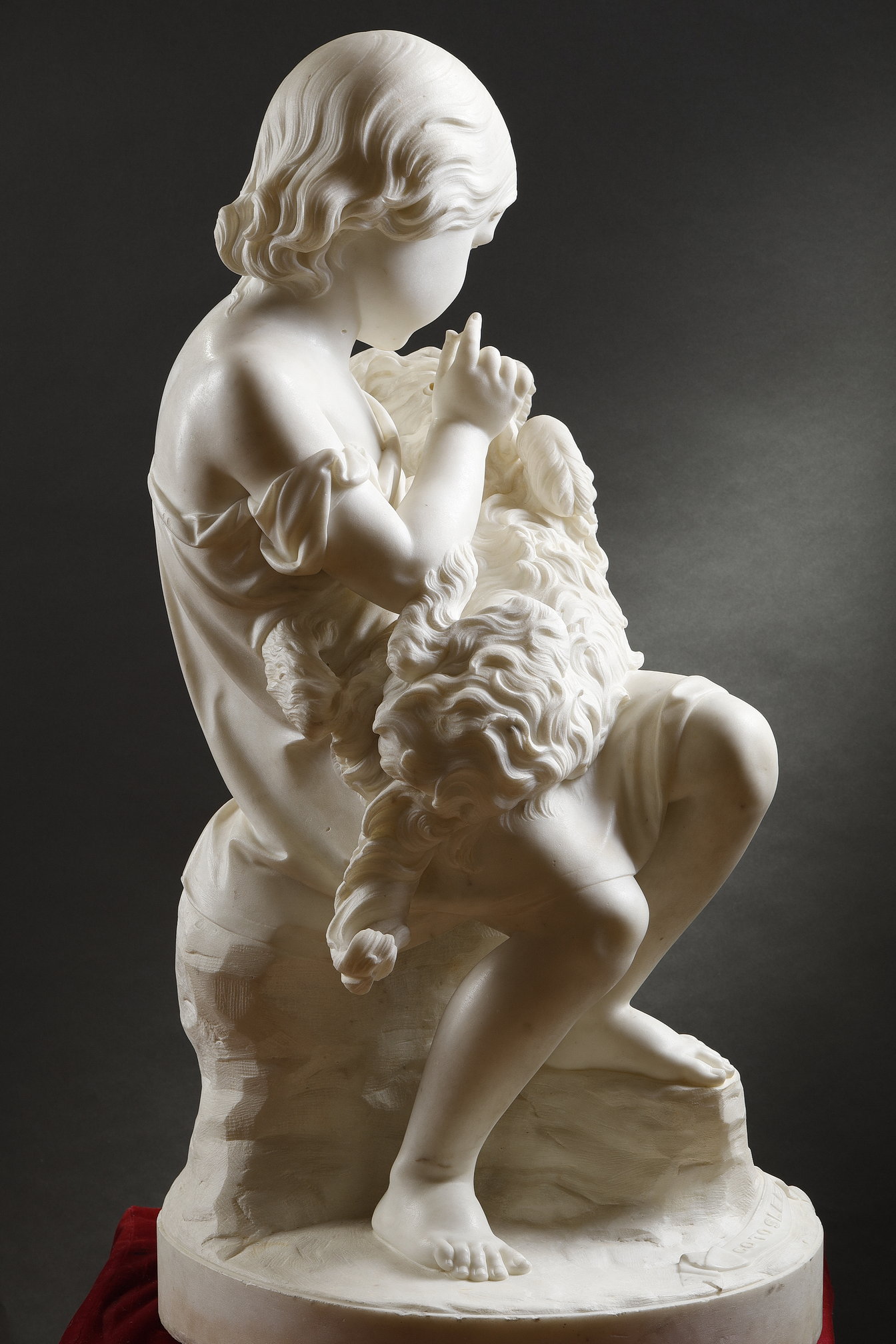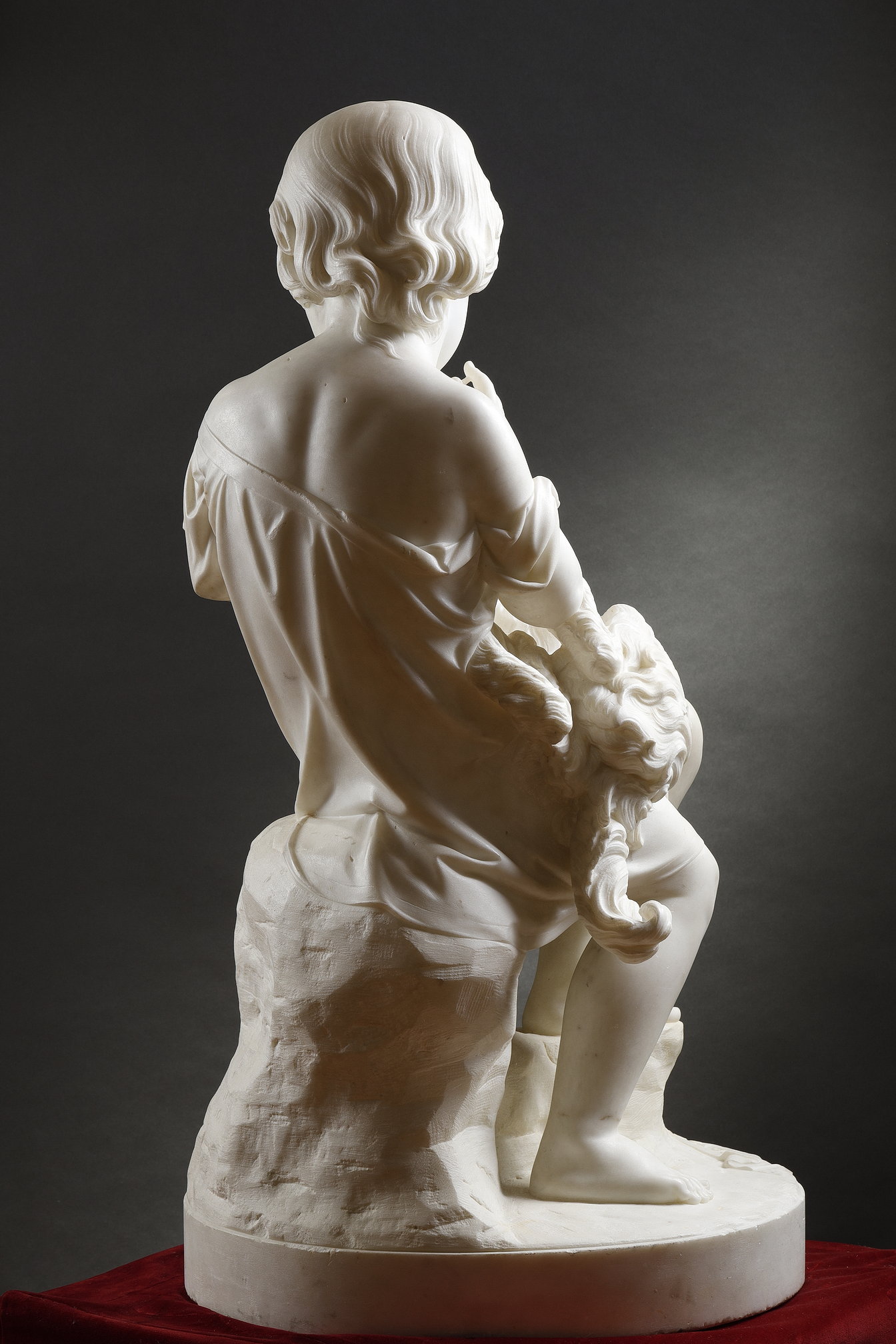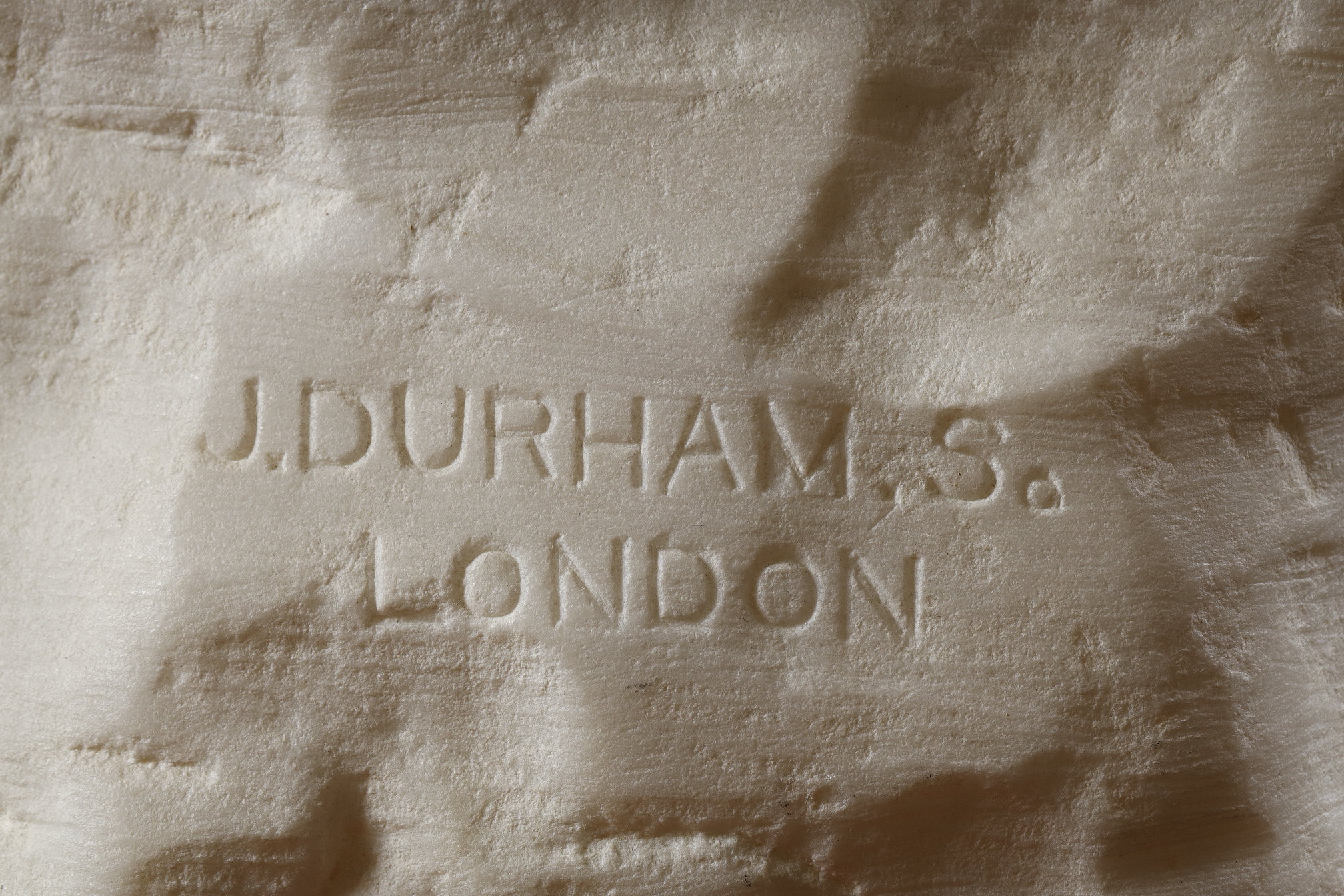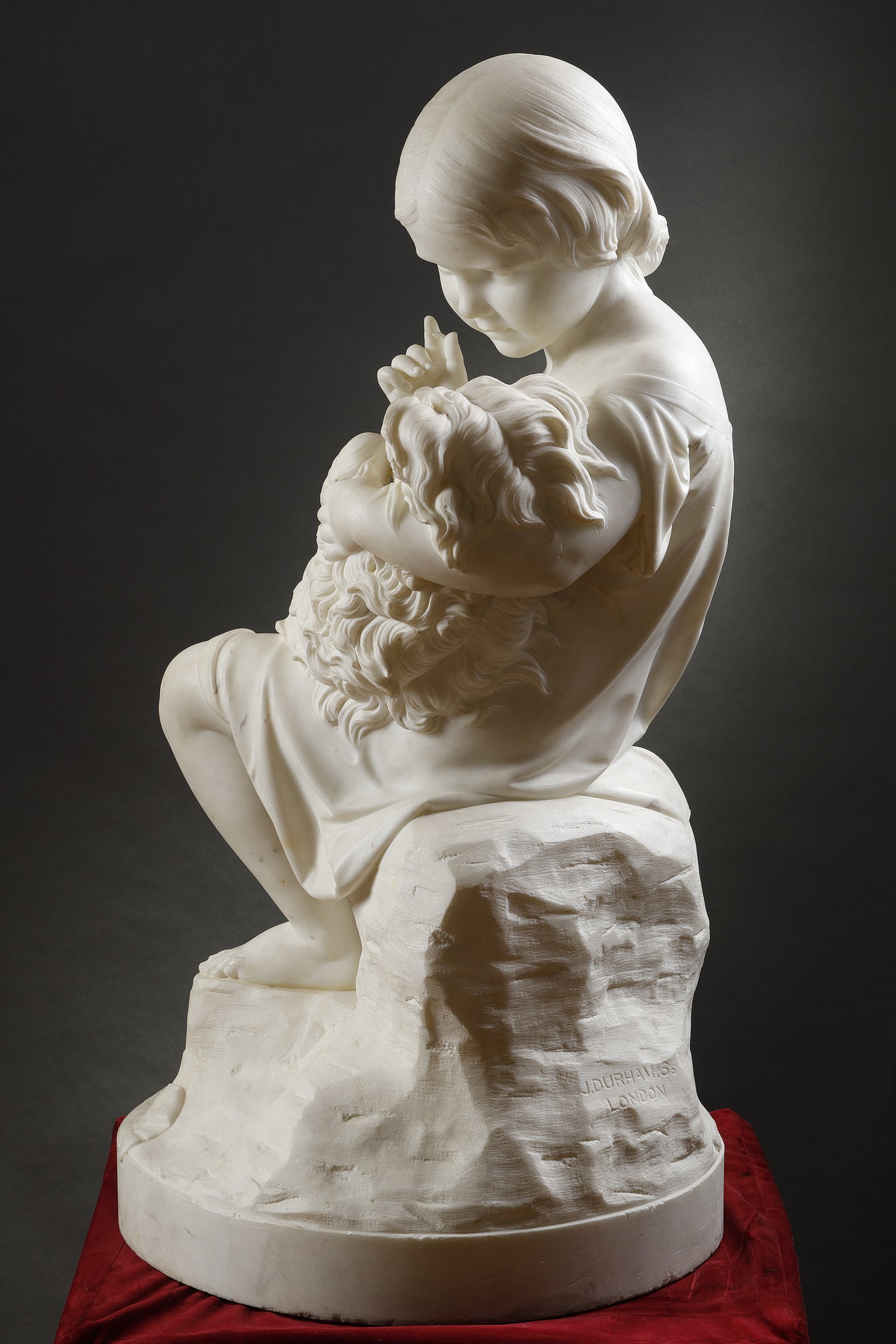GO TO SLEEP
JOSEPH DURHAM (1814-1877)
British
Date : ca. 1860
Dimensions : 84 cm (Height)/ D45 cm (Base)
Material : White Carrara marble
Signature : “J. DURHAM Sc LONDON”
Historical and artistic context
In this sculpture of remarkable tenderness, Joseph Durham presents a young girl seated upon a natural rock, gently cradling a long-haired dog in her lap. Barefoot, the child gazes at the animal with quiet affection, one finger lifted to her lips, as if bidding the dog to calm itself and inviting it to rest.
At her feet, the inscription “go to sleep” serves as an ode to rest, innocence, and peace. The posture of the child, her lowered gaze, and the stillness of the animal form a harmonious composition imbued with serenity. It is an invitation to stillness, or perhaps a gentle game—an intimate moment in which the child, with a conspiratorial gesture, whispers to her companion that it is time to sleep.
The work belongs to the Victorian tradition of idealised representations of childhood, in which innocence, tranquillity, and love of animals convey a universal language. The dog here becomes a symbol of affection, fidelity, and the intimate bond between humans and animals.
The present sculpture was exhibited at the Royal Academy of Arts in London in 1861 (No. 985), where it drew public attention for its sensitivity and grace. It was most likely acquired by Sir F. Bennoch shortly thereafter, and subsequently shown at the International Exhibition of London in 1862, where it was praised in the Illustrated London News (July 12, 1862) as “a fresh, pleasing, and natural subject… humourously expressed, and told with excellent taste.” Listed under Joseph Durham as sculptor and Sir F. Bennoch, Esq. as owner, the work stood out for its tenderness and expressive composition.
Literature
-
Royal Academy of Arts, London. Sculpture. Exhibition catalogue, 1861, p.43.
-
The Illustrated London News, “Go To Sleep!”, Supplement, No. 1154, July 12, 1862, p.17.
-
International Exhibition, London. Official catalogue, Fine Art department, 1862, p.142.

